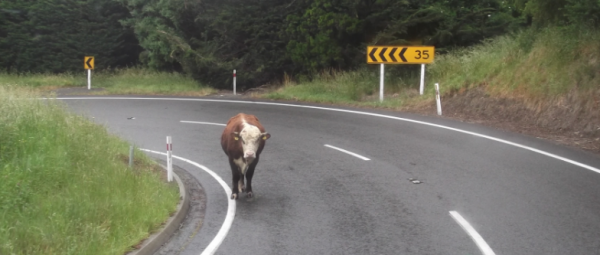Wandering stock – both sheep and cattle – continue to create a road hazard for drivers on West Coast and Buller highways. In each of the past two years, there have been more than 70 reports of stock on the region’s state highways.
Each report of an animal or more than one animal on the highway or grazing next to the road requires the NZ Transport Agency or local councils to safely secure the animals, to keep the highways safe, says Transport Agency Journey Manager Lee Wright.
“The numbers do not alter that much between the 2014/15 year and the current year about to end. Plus the numbers are generally similar for different parts of the network, suggesting some property owners are not taking the need to safely fence their stock seriously. The consequences of a collision with a large beast in particular, can be very severe, resulting in death and serious injury.
“Winter driving conditions add to the difficulty of seeing farm stock with fewer daylight hours and increased chances of fog in the mornings. Rural property owners are required to ensure their land is securely fenced to prevent animals from straying onto the highway. They are also liable for any damage caused if their stock is wandering, and they can be prosecuted if animals cause a crash and negligence is proven.”
What to do if you spot a cow or sheep on or near the highway, unfenced?
People are asked to report any wandering stock to the Transport Agency by phoning 0800 4 HIGHWAYS.
Some areas have improved
One area which showed an improvement on the West Coast from the 2014/15 year to the current year was State Highway 6 between Greymouth and Hokitika, where reports of wandering stock dropped from 15 in 2014/15 to six in the current year.
Areas of concern
Areas of most concern are the Coast Road, SH6, between Greymouth and Westport with 19 wandering stock reports in the year to date (14 in 2014/15), SH6 south of Hokitika which had 13 reports in the current year (10 in 2014/15), State Highway 7, north of Greymouth to Reefton and Springs Junction, which had 14 wandering stock reports in the current year (12 in 2014/15), SH73, Arthurs Pass to Kumara Junction, with eight reports this year and nine the year before and SH67, north of Westport towards Karamea, which had an increase in reports in the past year – from three in 2014/15 to eight in the current year.

This cow was redirected to its paddock from a Banks Peninsula site